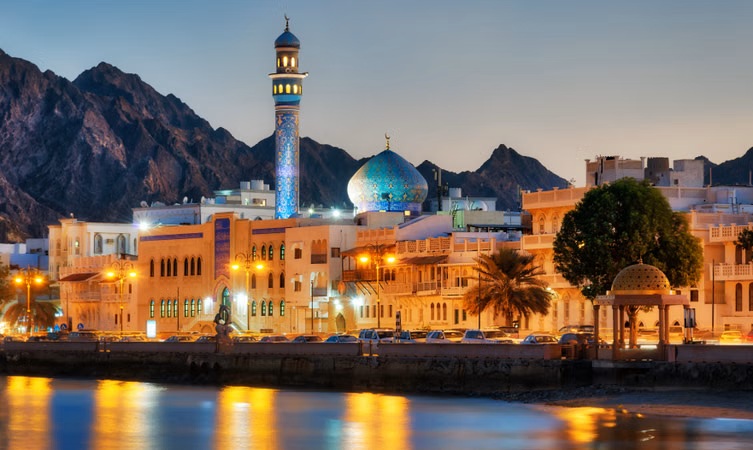Muscat, the capital of Oman, is a unique city nestled between the towering rocky mountains of the Hajar Mountains and the beautiful beaches of the Gulf of Oman. Unlike many capitals in the region, this city does not have giant skyscrapers and has an authentic and pleasant appearance with traditional architecture and short white buildings. Muscat has a pleasant combination of ancient history, rich culture and eye-catching nature. In this article, we will introduce the most important historical, natural and cultural attractions of Muscat – from old forts and markets to magnificent mosques, museums, modern cultural centers and beautiful beaches.
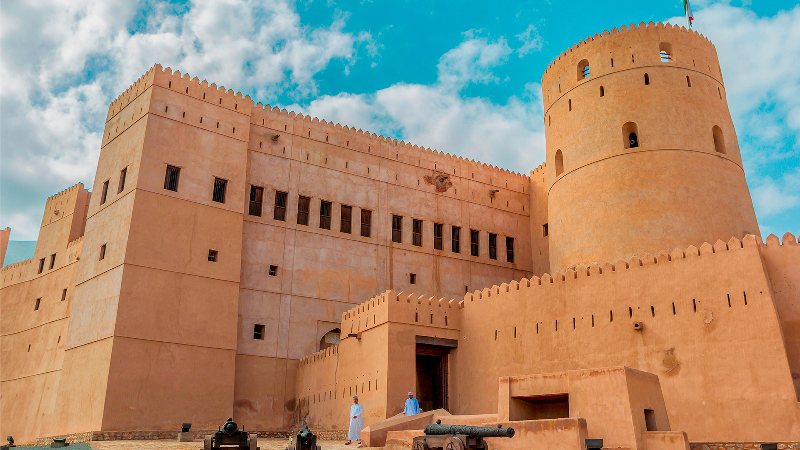
Muscat’s historical forts
One of Muscat’s historical landmarks is the magnificent Jalali and Mirani Forts, which stand on the cliffs of Muscat’s old harbor overlooking the sea. These fortified forts were built during the Portuguese rule in Oman around 1587 to protect the port of Muscat from invasion. The Jalali and Mirani Forts have played an important role in defending the city for centuries and today, as valuable relics of Portuguese and Omani history, they inspire admiration in every visitor. Between these two forts is the magnificent Qasr Al Alam Palace, the royal residence of Sultan Qaboos and a beautiful example of modern Islamic architecture. With its blue and gold columns, artistic reliefs and reliefs, and lush grounds, Qasr Al Alam offers spectacular views of the Gulf of Oman. Visitors can tour the palace’s exterior and its magnificent facade, taking with them a memorable image of Muscat’s historical splendor.
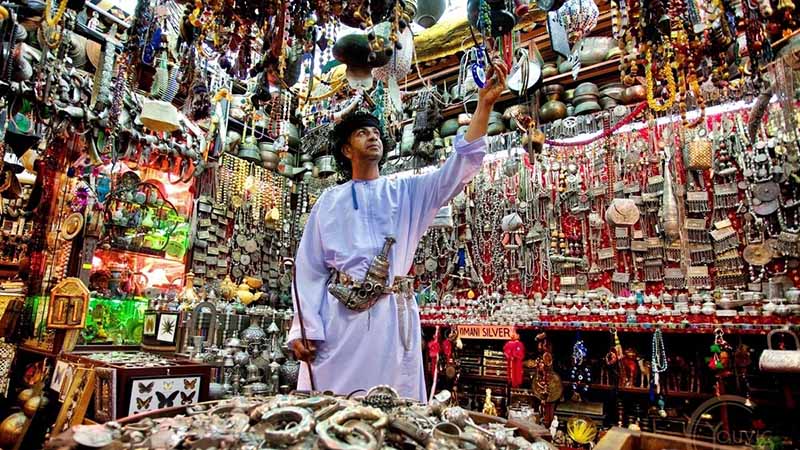
Mutrah Market (Souk Mutrah)
A view of the colorful alleys of Mutrah Bazaar in Muscat.
Located in the coastal neighborhood of Mutrah, the traditional Mutrah Bazaar is one of the oldest markets in Oman and even in the Arab world. The market dates back several centuries and still retains the atmosphere of old oriental markets with its wooden ceilings, narrow corridors and traditional architecture. In Mutrah Bazaar, you can find a variety of local goods such as Omani oud and frankincense, traditional fabrics and clothing, handmade daggers and silverware, fragrant spices and the famous Omani sweets (halwa). Many vendors offer Omani handicrafts and souvenirs, and tourists can chat with locals while shopping and immerse themselves in the excitement of this vibrant market. The famous market begins with its main gate facing the Corniche (coast) and includes a winding network of corridors, a stroll through which provides a pure experience of local Omani life and culture.
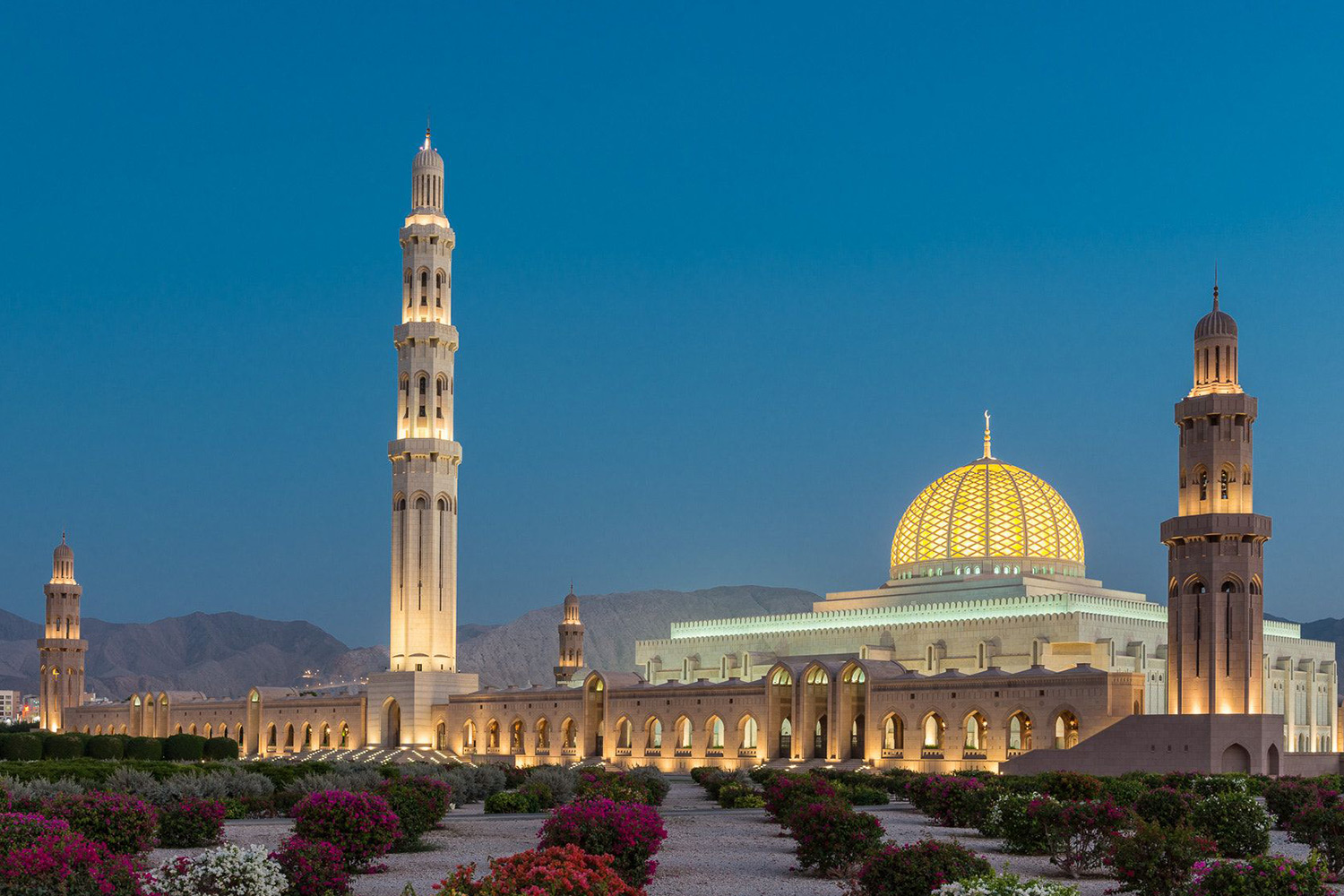
Sultan Qaboos Grand Mosque
Sultan Qaboos Grand Mosque – A blend of modern Islamic architecture in the heart of Muscat.
One of Muscat’s most important cultural and religious attractions is the Sultan Qaboos Grand Mosque, which showcases the splendor of Islamic architecture. This massive mosque was built by Sultan Qaboos in the late 20th century and opened in 2001. The architectural style of the mosque is an artistic fusion of Iranian and Arabic traditions, and Iranian artists and architects were also used in its construction. The mosque’s building area is about 416,000 square meters and, with its large dome and five tall minarets, is one of the largest mosques in the world. Upon entering the main nave, visitors are overwhelmed by the stunning beauty of the mosque; the hand-woven Persian carpet spread in the nave, with an area of nearly 5,000 square meters, contains about 1.7 billion knots and weighs more than 24 tons, and was once the largest hand-woven carpet in the world. Also, a huge crystal chandelier weighing several tons hangs in the mosque’s prayer hall, which was considered one of the largest chandeliers in the world at the time. The walls and ceiling of the mosque are decorated with tiles, muqarnas and artistic inscriptions, and a spiritual peace reigns in the courtyard and gardens surrounding the mosque. The Sultan Qaboos Grand Mosque is open to non-Muslims every day (except Fridays) during certain hours, and tourists can visit this masterpiece of modern Islamic architecture while observing appropriate clothing.
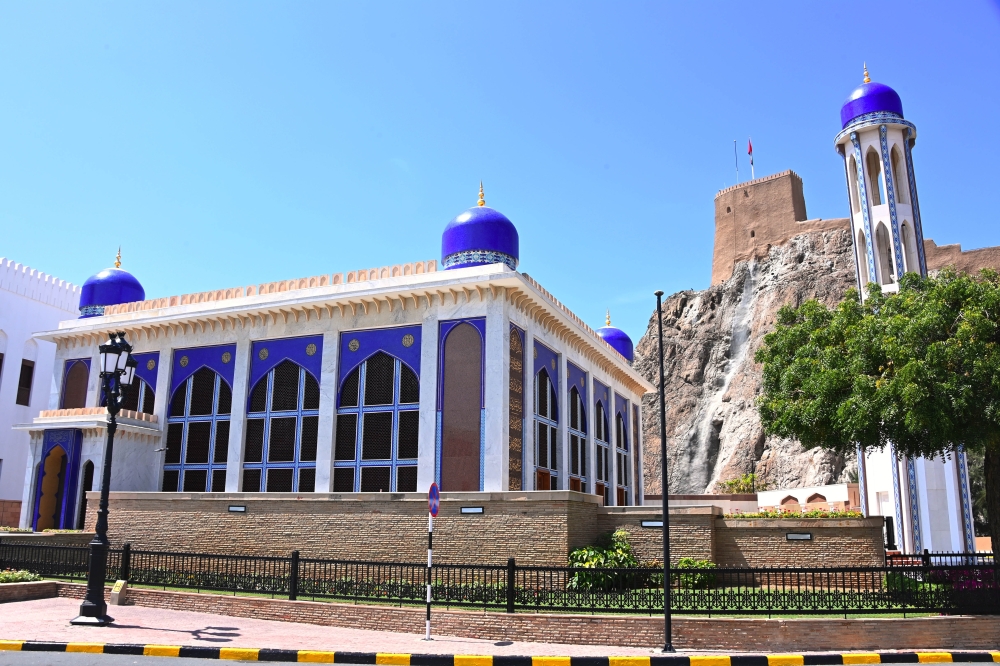
Al-Khor Mosque (Lawatiyah Mosque)
Near the famous bazaar and in the historical context of the city, there is an old and beautiful mosque called Al Khor Mosque, also known as Lawatiyah Mosque. With its turquoise dome and impressive tilework, this mosque is one of the symbols of the famous neighborhood. The architecture of Al Khor Mosque displays a unique combination of Iranian, Arabic and Indian architectural art, reflecting the cultural diversity of Muscat in past periods. Although not as large and luxurious as the Sultan Qaboos Mosque, Al Khor Mosque has historical value as one of the oldest mosques in the city (its construction dates back to the presence of Indian and Iranian trading communities in Oman), and tourists can enjoy the exterior and the spiritual atmosphere around it.
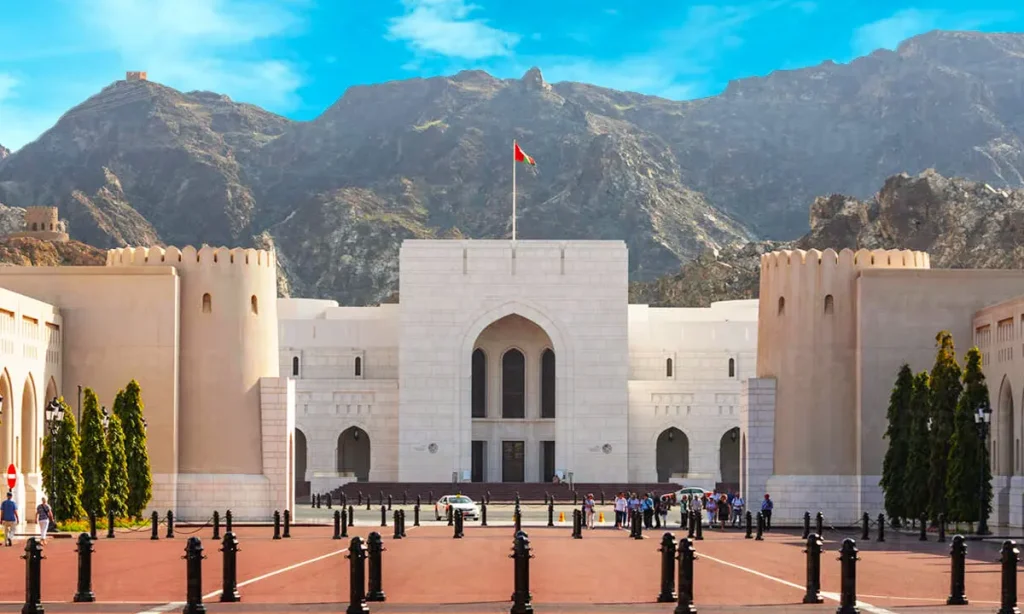
Muscat Museums
As the cultural center of Oman, Muscat is home to several important museums that showcase the country’s history and art. One of the most prominent is the National Museum of Oman in the Old Muscat area (near the Royal Palace). The National Museum of Oman is the country’s largest cultural center, opened by royal decree in 2016. This modern museum, spread over an area of about 13,700 square meters, displays Oman’s national heritage from prehistoric times (the first human settlements about two million years ago) to the present day. The museum’s 14 permanent halls house more than 5,400 historical and cultural objects. Visitors can learn about different aspects of Omani culture in its diverse halls; from the People and Land Gallery, which deals with Oman’s ethnicities and traditional life, to the Maritime History Gallery, which narrates Oman’s role in maritime trade, and the Glory of Islam Gallery, which is dedicated to the Islamic era of Oman. The National Museum also has an education center, a cinema, and interactive sections for children, making it an ideal educational-entertainment destination.
Another important museum in Muscat is Bait al-Zubayr. Bait al-Zubayr is a private museum complex in the old city, set in several historic buildings, and houses a treasure trove of Omani art and culture. The traditional architecture of the buildings in the complex (including Bait al-Bagh, Bait al-Dalaly, and Bait al-Wad) is worth seeing on its own, and each one represents the lifestyle and homes of Oman in past eras. In the halls and courtyards of Bait al-Zubayr, valuable objects such as traditional weapons (swords, Omani daggers known as “khanjars,” and old rifles), local men’s and women’s clothing, historical coins and medals, old utensils and everyday items, and even old manuscripts and books are on display. This complex is like a window into Oman’s past, and visitors can get up close and personal with the lifestyle and traditional art of the people of this land. The pleasant atmosphere of the gardens and the traditional cafe inside the complex make the experience of visiting Bait al-Zubair more pleasant.
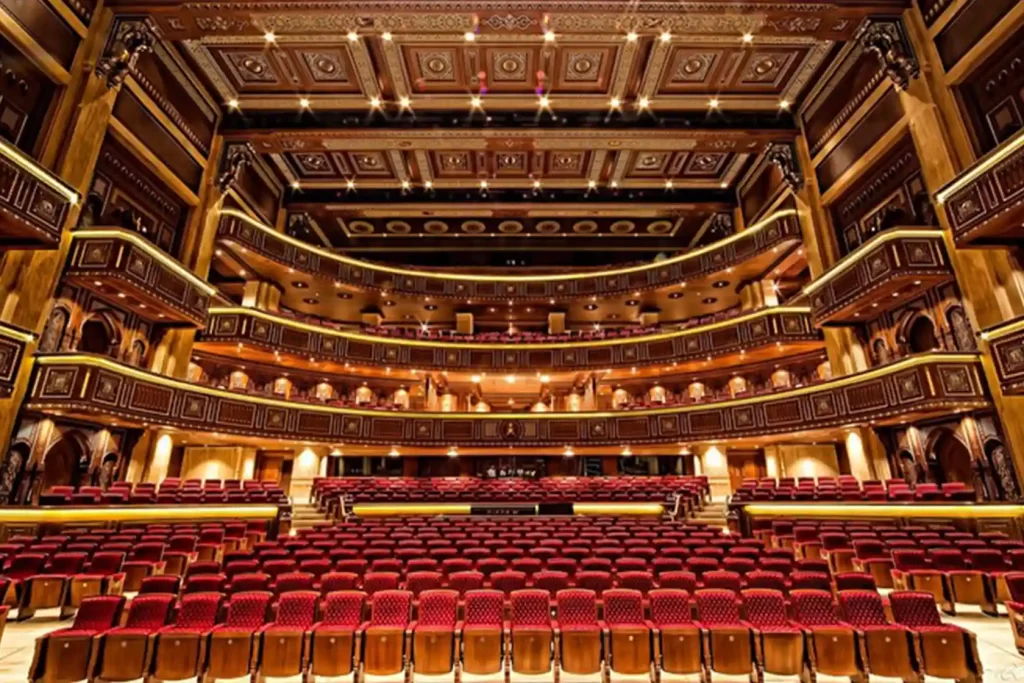
Royal Opera House Muscat
Exterior of the Royal Opera House Muscat at night.
The Royal Opera House Muscat is a symbol of Oman’s cultural prosperity in the modern era. This magnificent hall is considered the first opera house in the Persian Gulf region and the Arabian Peninsula, built at the initiative of Sultan Qaboos to promote the musical arts in Oman. Construction of the opera began in 2007 and was finally opened in 2011. The building of the opera house has created a magnificent and eye-catching structure by using contemporary Omani architectural style and Islamic and Arabic architectural elements. The main hall has a capacity of over 1,100 people and is equipped with the most advanced audio-visual facilities. In addition to the theater and concert hall, the Muscat Opera House complex has multi-purpose halls for meetings and conferences, beautiful gardens and open spaces, a cultural bazaar for displaying Omani arts and crafts, souvenir shops, luxury restaurants and stylish cafes. This hall hosts a variety of artistic events, including opera performances, classical and Arabic music concerts, ballet and theater performances, and famous artists from all over the world have performed there. A visit to the Muscat Opera House (even on days when there is no performance) is attractive for architecture and music enthusiasts, as they can take advantage of guided tours and get acquainted with the different parts of this cultural masterpiece.
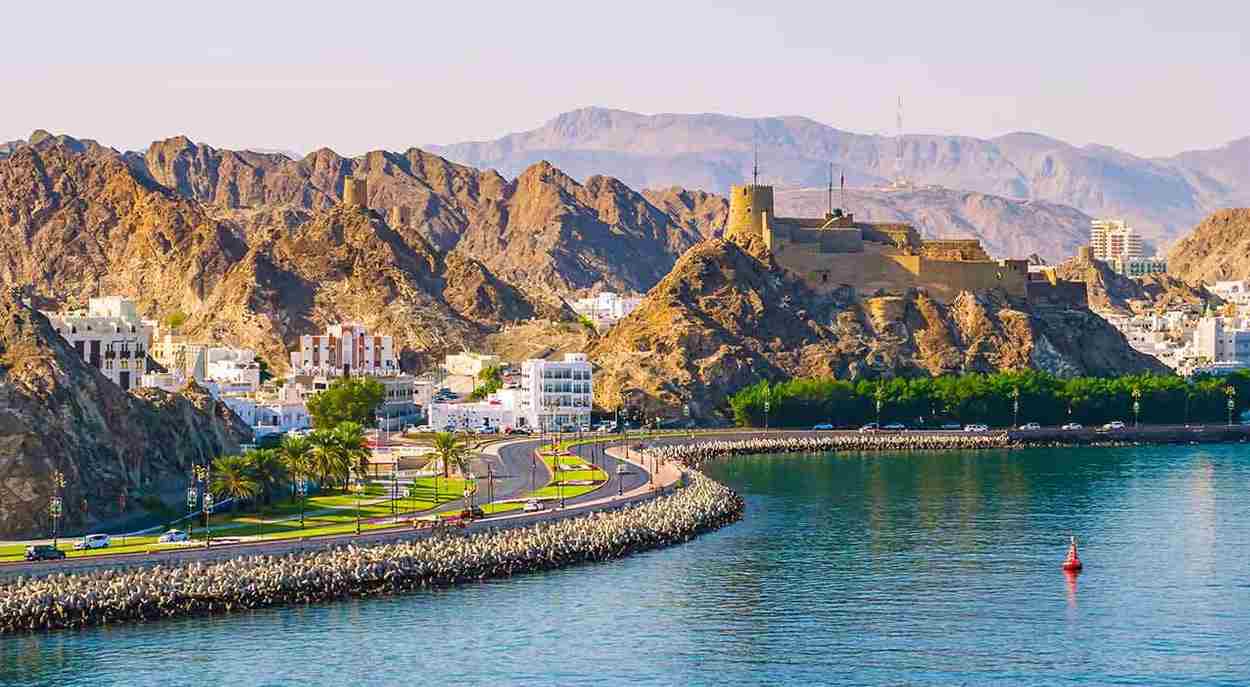
Muscat’s natural attractions
In addition to its historical and cultural heritage, Muscat is also blessed with beautiful nature. The city’s coastline along the Sea of Oman features clean, inviting beaches that are perfect for families to relax and unwind, as well as a respite from the desert heat. One of Muscat’s most popular beaches is Qurum Beach in the modern Qurum neighborhood, known for its golden sands and surrounding tourist facilities. With a selection of stylish restaurants (with local and international cuisine), first-class cafes, and the possibility of water sports, Qurum Beach is a great destination for a relaxing day by the water. Strolling under the shade of palm trees along this beach, sunbathing in the morning, or watching the orange sunset over the sea are among the pleasures that should not be missed in Muscat. Also, Al Sifa Beach, located near the city, is an attractive option for nature lovers and night stargazing, with the possibility of camping and overnight camping.
Another natural feature of Muscat is the Muttrah Corniche (the Muttrah beach and pier). The Muttrah Corniche is located along the old port and in the heart of the city and is an ideal place to walk and enjoy the beautiful scenery. On one side, the blue of the Sea of Oman spreads before your eyes, and on the other, the rocky mountains and high cliffs form the backdrop of the landscape. This combination of mountains and sea presents a unique picture of the natural beauty of Muscat. Along the Corniche, historical buildings with ancient architecture (such as the old merchant houses and the Muttrah Clock Tower) are also visible, which are a reminder of the city’s traditional identity. Many tourists come to the Muttrah Corniche in the evenings to walk in the open air and see the fishing boats and pleasure boats on the pier, shop at the fish market and street stalls, or watch the sunset behind the Jalali and Mirani forts. Considered one of the most beautiful areas in Muscat, the Corniche also provides unparalleled photography opportunities and is a great place to picnic and spend time with family and friends.
Let’s not forget that the mountains surrounding Muscat are also part of the city’s natural charm. The city is nestled in the arid, rocky heights of the Hajar Mountains, which meant that for centuries Muscat was accessible almost exclusively by sea. Today, the mountain roads surrounding Muscat provide scenic routes for nature lovers and light mountain climbers. Tourists can reach elevated viewpoints overlooking Muscat within a short drive from the city, and enjoy panoramic views of the city, sea, and mountains all at once. In addition, Muscat’s relatively short distance from Oman’s famous mountain ranges – such as Jabal Akhdar and Jabal Shams – allows you to experience the freshness of the highlands and foothill villages on day or multi-day trips.
Muscat, an emerald paradise on the edge of the Arabian desert, is a city where history, nature and culture are beautifully intertwined. From wandering the back alleys of the famous souk and smelling the scent of incense and spices to admiring the sunset over the sea on the famous Corniche; from contemplating the spiritual splendor of the Grand Mosque and the grandeur of Portuguese forts to enjoying music in the modern opera house – all these experiences are just a few of the attractions of Muscat. With its hospitable people, clean and safe infrastructure, and a blend of tradition and modernity, the capital of Oman is a unique destination for any tourist looking for a different experience in the Middle East. On a trip to Muscat, you will have a journey into the heart of Oman’s turbulent history, rich culture and stunning nature, the memories of which will remain in your mind for years to come.

